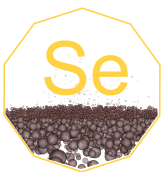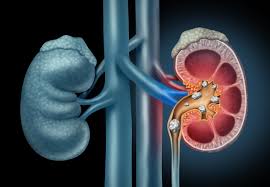Selenium

Selenium: Element Overview
Basic Information
- Symbol: Se
- Atomic Number: 34
- Atomic Weight: 78.96 u
- Element Category: Non-metal (also considered a metalloid in some contexts)
- Group: 16 (Chalcogens)
- Period: 4
Physical Properties
- Phase at Room Temperature: Solid
- Melting Point: 221 °C (430 °F)
- Boiling Point: 685 °C (1265 °F)
- Density: 4.81 g/cm³ (gray selenium)
- Color: Varies with form: red, gray, and black are common allotropes.
- Crystal Structure: Hexagonal for gray selenium; amorphous for red and black forms.
Chemical Properties
- Electronegativity: 2.55 (Pauling scale)
- Ionization Energies:
- First: 941 kJ/mol
- Second: 2045 kJ/mol
- Third: 2973.7 kJ/mol
- Oxidation States: -2, +4, +6 (most common are -2, +4, +6)
- Reactivity: Reacts with halogens and concentrated nitric acid but is generally resistant to attack by non-oxidizing acids.
Isotopes
- Stable Isotopes: Selenium has six stable isotopes: Se-74, Se-76, Se-77, Se-78, Se-80, and Se-82.
- Se-74: 0.89%
- Se-76: 9.37%
- Se-77: 7.63%
- Se-78: 23.77%
- Se-80: 49.61%
- Se-82: 8.73%
- Radioisotopes: Several radioisotopes, including Se-75, which is used in industrial radiography.
Occurrence and Production
- Natural Abundance: Selenium is the 67th most abundant element in the Earth’s crust.
- Sources: Found in minerals such as selenite (SeO₃²⁻), selenide, and selenate, often as a byproduct of copper refining.
- Production: Obtained as a byproduct of refining sulfide ores of copper, nickel, or lead.
Uses and Applications
- Glass Production: Used to decolorize glass and to make red-colored glasses and enamels.
- Electronics: Used in photocells, light meters, and solar cells due to its photoconductive properties.
- Alloys: Used to improve the machinability of stainless steel and copper alloys.
- Pigments: Used in pigments for ceramics, plastics, paints, and inks.
- Nutritional Supplements: An essential trace element in small amounts for animal and human nutrition.
- Medical: Used in antidandruff shampoos and in some medical treatments for skin diseases.
Safety and Precautions
- Reactivity: Selenium compounds, particularly hydrogen selenide (H₂Se), are highly toxic and pose significant health risks.
- Handling: Should be handled with care, using appropriate protective equipment to avoid inhalation and skin contact.
- Toxicity: Chronic exposure to selenium can lead to selenosis, characterized by gastrointestinal distress, hair loss, and neurological damage.
Biological Role
- Essential Element: Selenium is essential for human and animal health.
- Enzyme Function: Plays a crucial role in the functioning of several enzymes, including glutathione peroxidase, which protects cells from oxidative damage.
- Health: Required for proper thyroid function and immune system support.
Historical Background
- Discovery: Discovered by Jöns Jacob Berzelius in 1817.
- Naming: Named after the Greek word “selene,” meaning moon.
Interesting Facts
- Photoconductivity: Selenium’s electrical conductivity increases with exposure to light, making it useful in photocopying and light-sensing applications.
- Glass Industry: Selenium is used to remove the green tint caused by iron impurities in glass production.
- Allotropic Forms: Selenium exists in several allotropic forms, each with distinct properties and uses.
Summary
Selenium is a versatile non-metal with applications in electronics, glass production, and nutrition. It is essential for human health, playing a crucial role in various enzymatic processes. Discovered in the early 19th century, selenium is primarily obtained as a byproduct of copper refining. Its unique properties make it valuable in diverse industrial and technological applications.
Questions and Answers about Selenium:
Q: What is the chemical symbol for Selenium?
- A: Se
Q: What is the atomic number of Selenium?
- A: 34
Q: What type of element is Selenium?
- A: Non-metal (also considered a metalloid in some contexts)
Q: What is the atomic weight of Selenium?
- A: 78.96 u
Q: What group is Selenium in?
- A: Group 16 (Chalcogens)
Q: What period is Selenium in?
- A: Period 4
Q: What is the phase of Selenium at room temperature?
- A: Solid
Q: What is the melting point of Selenium?
- A: 221 °C (430 °F)
Q: What is the boiling point of Selenium?
- A: 685 °C (1265 °F)
Q: What is the density of Selenium at 20 °C?
- A: 4.81 g/cm³
Q: What is the color of Selenium in its most stable form?
- A: Gray, metallic luster
Q: What is the crystal structure of Selenium?
- A: Hexagonal for gray selenium; amorphous for red and black forms
Q: What is the electronegativity of Selenium?
- A: 2.55 (Pauling scale)
Q: What is the first ionization energy of Selenium?
- A: 941 kJ/mol
Q: How many stable isotopes does Selenium have?
- A: Six (Se-74, Se-76, Se-77, Se-78, Se-80, Se-82)
Q: What is the most abundant isotope of Selenium?
- A: Se-80
Q: How is Selenium commercially produced?
- A: As a byproduct of refining sulfide ores of copper, nickel, or lead
Q: What is the natural abundance of Selenium in the Earth’s crust?
- A: 67th most abundant element
Q: What common minerals contain Selenium?
- A: Selenite (SeO₃²⁻), selenide, selenate
Q: What industry uses Selenium extensively for glass production?
- A: Glass industry
Q: What is one use of Selenium in electronics?
- A: Used in photocells and solar cells
Q: What role does Selenium play in the production of pigments?
- A: Used in pigments for ceramics, plastics, paints, and inks
Q: Why is Selenium used in nutritional supplements?
- A: An essential trace element in small amounts for human and animal nutrition
Q: What is the biological role of Selenium in the body?
- A: Plays a crucial role in the functioning of several enzymes, including glutathione peroxidase
Q: Who discovered Selenium?
- A: Jöns Jacob Berzelius
Q: In what year was Selenium discovered?
- A: 1817
Q: What is the origin of the name “Selenium”?
- A: Named after the Greek word “selene,” meaning moon
Q: What property makes Selenium valuable in photocopying and light-sensing applications?
- A: Its photoconductivity
Q: What health hazard is associated with Selenium compounds?
- A: Some selenium compounds are highly toxic and pose significant health risks
Q: How should Selenium and its compounds be handled?
- A: With care, using appropriate protective equipment
Q: What is the second ionization energy of Selenium?
- A: 2045 kJ/mol
Q: What is the third ionization energy of Selenium?
- A: 2973.7 kJ/mol
Q: Is Selenium essential for plant health?
- A: Selenium is not essential for all plants but is beneficial in trace amounts for some
Q: What is the significance of Selenium in thyroid function?
- A: Selenium is required for proper thyroid function
Q: What is the role of Selenium in the production of special glass types?
- A: Used to decolorize glass and make red-colored glasses and enamels
Q: How does Selenium benefit the electronics industry?
- A: Used in semiconductors and various electronic components
Q: What is Selenium’s role in medical treatments?
- A: Used in antidandruff shampoos and some medical treatments for skin diseases
Q: What is the environmental impact of Selenium mining?
- A: Generally low, as it is produced as a byproduct of other metal refining processes
Q: What color are Selenium compounds typically?
- A: They can exhibit various colors, with red and black being common for different allotropes
Q: What is Selenium’s role in the immune system?
- A: Essential for the proper functioning of the immune system






